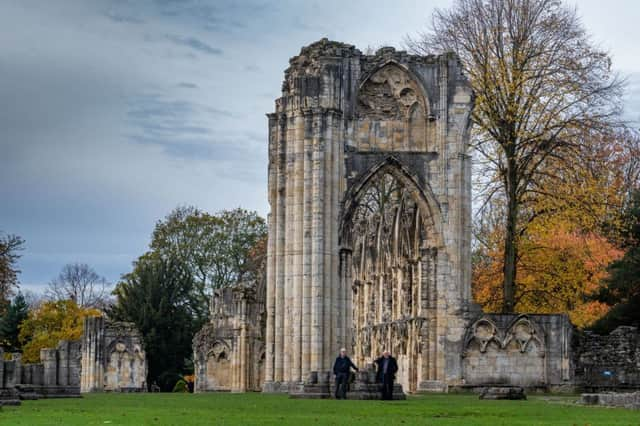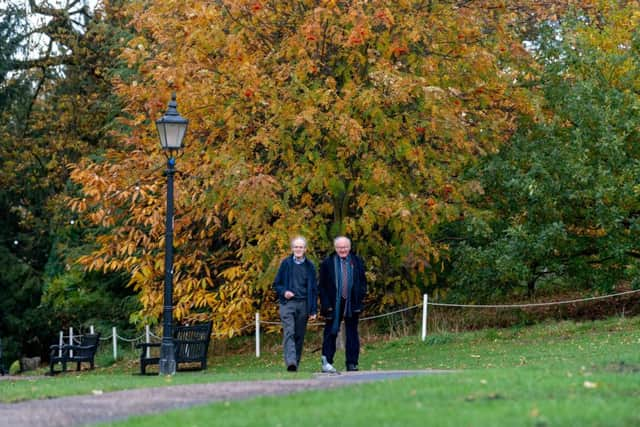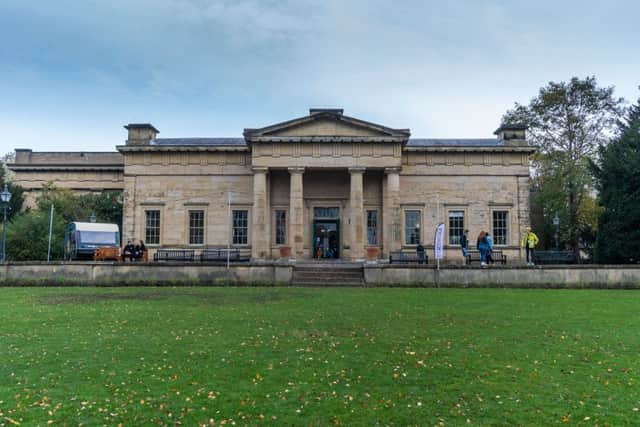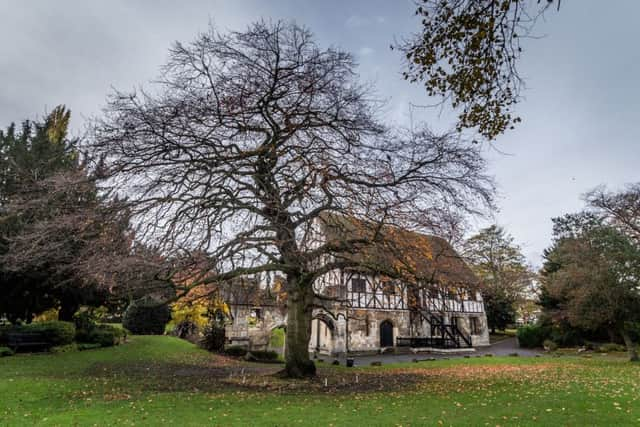The fascinating history of the Museum Gardens in York


Over the years it has witnessed riots, a serious skirmish in the Civil War, exhibitions and pageants, military displays – and much more. It has been home to one of the great monastic houses, to a botanical garden and ponds (with one of the biggest lily-pads in the world), a menagerie, waterworks and a museum. The Romans left their mark here, as did the Vikings, the medieval monarchs, the Georgians, the Victorians and many between and after.
George VI, when he was still Duke of York, once observed that if you examined the history of York, you saw “the history of England”. At the very core of York are the Museum Gardens, and it is in this space, with the River Ouse to one side and the ruins of St Mary’s Abbey to another, that the marvellous melange of events has taken place. That we have this vibrant green lung in the centre of the city is largely due to the work of the Yorkshire Philosophical Society (YPS).
Advertisement
Hide AdAdvertisement
Hide AdThe organisation is still very much active to this day with around 700 members (anyone can apply to join) and will celebrate its 200th anniversary in a few years.


It is estimated that about a million people pass through the Museum Gardens every year – people on their way to and from work, visitors to the Museum itself and the picturesque Abbey ruins. When the weather is nice people bring their picnics and sit on the lawns. Some will make their way to the Art Gallery, others will discover one of the newest additions to this space, the fossil map, made by artist Janette Ireland, which celebrates the work of William Smith, the canal engineer turned geologist, who was the very first man to create a map of the complex rock strata that lies beneath our feet. William published his map in 1815 and lived for four years in Scarborough, where the Rotunda that he had built is now named after him as a Museum of Geology.
The Philosophical Society can trace its beginnings back to 1821 when some workmen discovered a cave in a quarry near Kirkdale. Venturing inside, they found piles of animal bones, which the men assumed were the remains of cattle. Being practical chaps, they decided to grind some of the bones down and to use them for filling potholes on the nearby roads.
Luckily, someone with a bit more knowledge happened to be passing and the site quickly became the centre of immense scientific interest. The bones turned out to be of animals not usually associated with our Yorkshire climate – among them were elephants, hippopotamus, rhino and elks. Enter the Rev William Buckland, the Reader in Geology at Oxford, who swiftly recognised the cave as being prehistoric.
Advertisement
Hide AdAdvertisement
Hide AdThis left some Yorkshire minds racing. Especially when they learned that many of the bones had found their way into private collections. Surely, they argued, Yorkshire should have its own museum in which to display them, and an independent society to enquire further into matters of scientific interest. And so the YPS was born.


York wanted to be up there with all the other cities of Britain that had their own philosophical societies – Newcastle, Liverpool and Manchester among them. And, at the start, they made sure that they had the right connections – their first patron was Viscount Milton, son and heir to Earl Fitzwilliam, not only one of the county’s most prominent landowners, but also one of the wealthiest men in the UK, with a fortune based on coal and industry.
The fledgling society needed a home and one choice was an area called The Manor Shore, which was owned by the Crown Estate, but leased to Lord Grantham. His lordship was initially reluctant to give up his land, but it was mostly neglected and unloved, and he soon changed his mind.
The land officially became theirs in February 1828, though it wasn’t until two years later that what we know now as the Yorkshire Museum finally opened. It was designed by William Wilkins and it is his building that still stands on the mound in the gardens, with its view across the river. It is now, rightly, a Grade I listed building.
Advertisement
Hide AdAdvertisement
Hide AdProfessor Peter Hogarth, who is now the Honorary Librarian of the YPS (and also a senior lecturer at the University of York) is an expert on the place. “The members back then wanted an imposing building, not too grand, but one that made a statement – and one that could definitely be seen. Rather like the houses for the wealthy that were going up at the time. Wilkins certainly gave them that.”


Peter is the author, along with his friend and colleague Ewan Anderson, of a new book – The Most Fortunate Situation: The Story of York’s Museum Gardens – which charts the history of the Museum Gardens, from the times when the Romans built their city walls and the imposing tower, right up to the present day.
It took both men – and some willing research assistants – to pull the project together. Peter describes the process as “painstaking, but hugely pleasurable”. And the book – which has many dozens of illustrations both historical and contemporary – is full of stories about the events that have shaped the much-loved gardens. Who knew that a bear chained up in the short-lived zoo escaped one day and chased its keeper around the grounds? Finally cornered, it was considered too awkward to keep and was sent to London Zoo. By stage coach. At the cost of £5.
The menagerie finally closed when the Great War came along and it was considered that feeding the animals was far too extravagant.
Advertisement
Hide AdAdvertisement
Hide AdSlowly but surely the YPS took over other leases and responsibilities leading to the gardens as they are today. They handed over responsibilities for the land and the buildings to the City of York in 1960.
The YPS are housed in the picturesque gatehouse by Lendal Bridge. It was once described as “a nice bit of Victorian nonsense”, and the person who called it that knew precisely what he was talking about – he was George Fowler Jones, the architect. At one point, a huge memorial gate was proposed to stand alongside it though “mercifully”, says Peter dryly, “that idea was quietly dropped”.
The grounds were once private, with admission granted only to YPS members, their families and friends, and for special occasions. All were asked to sign the book at the entrance gate. Once, a party of 1,000 children came by train from Wakefield to examine the grounds. “That was in 1840,” says Peter, “and they arrived in no less than 18 carriages. Apparently one of the best bits of the day for them were the tea and buns they had in the King’s Manor, and they were then cheered off from the city walls by the good folk of York. The mind boggles on how that was all arranged and organised. It wouldn’t happen these days – Health and Safety would intervene!”
At one time a subscription fee for entrance to the grounds for a year cost one shilling (5p), with one visitor remarking that this was “the best shilling’s worth to be had in England”. If you want to join the YPS today, it will cost you £30. For that you get access to regular lectures and talks across a broad range of subjects, an annual dinner, and several excursions.
Advertisement
Hide AdAdvertisement
Hide AdAnd while Peter and Ewan’s book gives the answer to so many questions about this “glorious place”, there are still several mysteries to be solved. Precisely where, for example, is the last resting place of the Northumbrian noble Earl Seward? “He’s in St Mary’s Abbey,” says Peter, “but in which spot, who knows?”
There’s also an intriguing photograph of a visiting troop of Boy Scouts. “Look closely at what they have on,” he says. “Who are these lads and why they are all wearing kilts? If anyone has the answer to that, we’d love to have it.”
The Most Fortunate Situation: The Story of York’s Museum Gardens, published by the Yorkshire Philosophical Society, is out now. For details go to www.ypsyork.org or tel: 01904 656713.